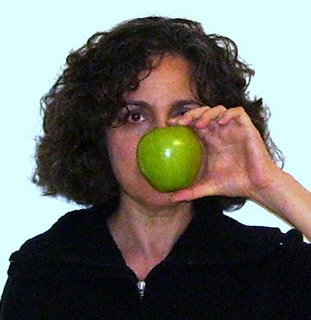"Dreaming" of the Supremes
Last night I went to the movies to see "Dreamgirls." I wanted some light entertainment, and I got it.
I was in Brooklyn, and the audience at the large and crowded theater I happened to go to was approximately 99% African-American. This made for a more interesting viewing experience than I would have had if I'd been back home. I expect that audiences in far northern New England are enjoying the film, too. But I very much doubt that their delight goes quite as deep or is expressed quite as strongly as that of my fellow viewers last night.
This audience especially adored Jennifer Hudson and her vocal riffs. And Eddie Murphy (who, to my surprise, actually can sing) was a crowd favorite.
For me--well, I have to say, I loved the costumes, the wigs, and the makeup. They brought back memories of the original Supremes--sorta, kinda.
The movie moved me to go to my computer (where else?) and refresh my memory on some of the real history of the Supremes, which of course is very different from that of the fictional group in the film. For one thing, there was no dreamy rapprochement among the girls--Flo Ballard stayed estranged from the rest. There were many other differences, as well--including Ballard's untimely death at the age of thirty-two.
But although the film doesn't purport to be a documentary, it can't help but dredge up the Supremes' memory for those of us "of a certain age." And being of that age myself, I can say that the Supremes really were a glamorous bunch, the first mainstream crossover African-American (Negro, in those days) sex symbols, which was exactly what they were designed and marketed to be. Berry Gordy was some kind of genius; whatever else you might say of him, he really knew his stuff.
The movie is too long, the music inferior (and quite different) to my ears than the Motown originals, and the film has the annoying habit--de rigueur in theatrical musicals; acceptable on stage but always bizarre and almost comical on film--of the main characters breaking into song at odd intervals when they should by all rights be speaking to each other. But, once you accept that convention (and accept it you must, if you want to have a good time), it's a fun evocation of a small part of an exciting era in musical and American history.
Those who weren't there may think the costumes are over the top. But I don't think so. The Supremes were known for their elegant, and then flamboyant (but still elegant) costuming and elaborate wigs, which managed to keep up with the times--and the times they did a-change during the years of their greatest popularity, mid-to late 60s.
They were also known for their stylized choreography, and in this the film is quite different from that of the earlier era; these days more pizazz is demanded. There is nothing I noticed in the movie that can quite compare with the wonderful just-this-side-of-camp hand business that accompanied the Supremes' hit "Stop! In the Name of Love!," which featured a breezy and almost self-mocking recurrent traffic-cop-like gesture, arm outstretched and palm towards the audience.
If you want to see it, tune in to U-tube for the original--or several originals; it features a few different performances. Please admire those simple classic white dresses at the beginning; I had one just like them. Notice, also, that Florence Ballard (on the left in the first clip, and on whom the Jennifer Hudson character was roughly modeled) was nowhere near heavy, unlike the character in the movie. In fact, she's perhaps the most graceful mover of the three, and that's saying quite a bit.
If you want more early Supremes, take a look. Once again, you'll see that the choreography was limited to a suggestive but restrained body shake, and expressive hand gestures. Simple white dresses again. Filmed somewhere in London, this clip also demonstrates a fact I first noticed in the 60s: British teenagers were unable to dance. It was as though they'd missed out on some important formative phase of life--they just couldn't do it. I don't know whether that problem has been remedied in the intervening decades, but at the time it seemed very odd but very noticeable--despite the Beatles and the Stones, these kids just couldn't shake it.
For a slightly later, more sparkly, more glam phase of the Supremes oeuvre, try this. Still having fun with the hand motions (a sort of hula-like thing going on there for this one), and the wigs look like they're about to take off and fly, at least on one side.
Lastly, for those who think that the scene in the film where the group sports geometric Vidal Sassoon-ish haircuts and Courreges-inspired minis might be fiction, think again. The Supremes definitely had a mod phase; here's the album cover to prove it (one I own, "The Supremes A' Go-Go"):

The 60s were a big tent, musically. The Supremes and other "girl groups" were a large part of it, and they were innovative in their own way. Motown was the prototype of something unusual at the time: an African-American owned and run company featuring predominantly African-American singers, that was tremendously successful in appealing to mainstream audiences, paving the way for many other African-American musicians who followed. And they were fun.

<< Home